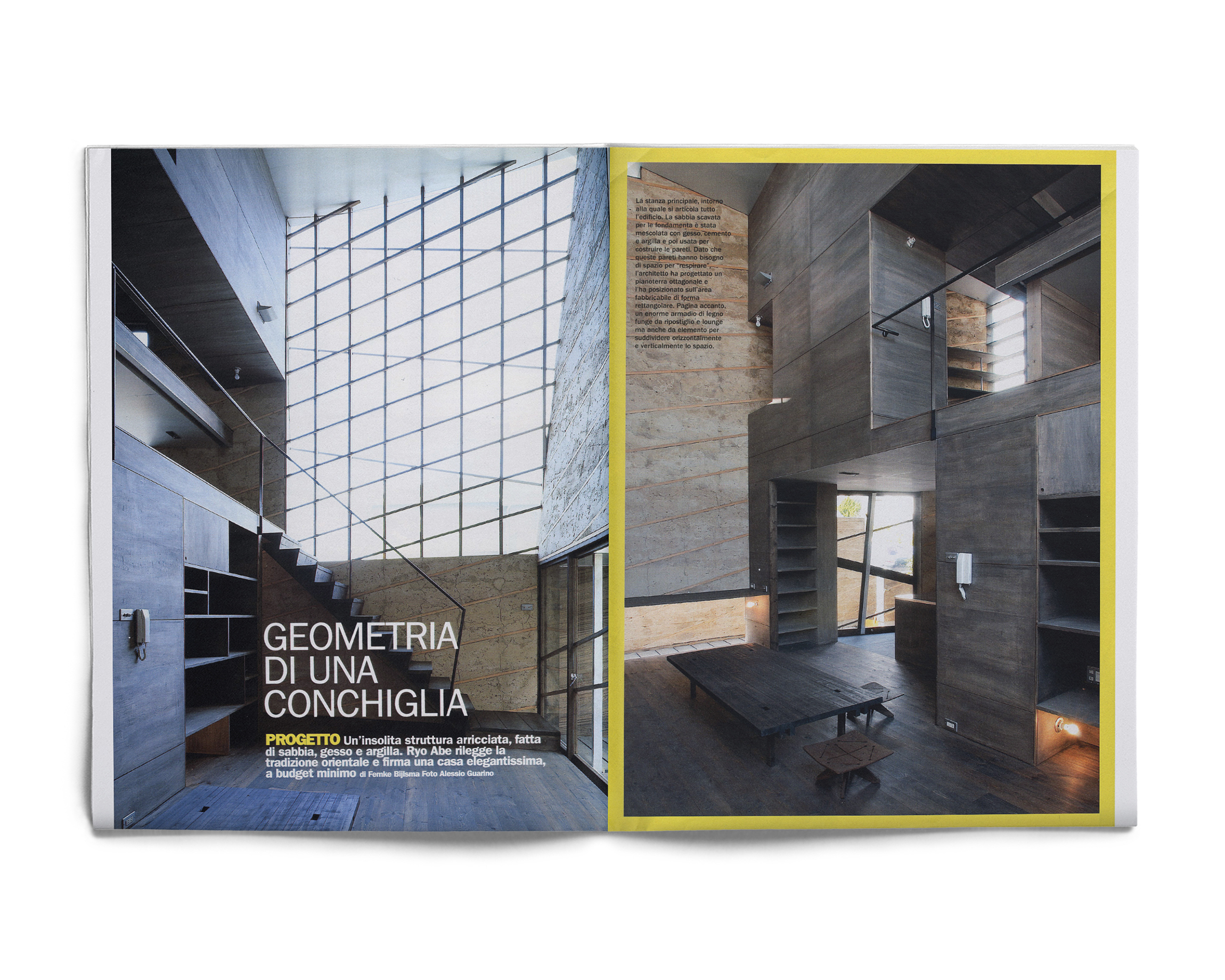Reinventing the old
A Conch-inspired House by the Sea
A dream for many but reality for very few: having one’s own house designed by an architect. In between dream and reality stands the general assumption that it is a luxury only the very rich can afford; but not so in Japan.
Buying a piece of land to build on in Japan costs a fortune, often swallowing half the budget for a new house. Sixty percent of the population nevertheless lives in individual detached houses, which in most cases are prefabricated and ordered from a catalogue.
Cheaper building lots are frequently not suitable for prefab houses due to their small size or irregular shape. Quite commonly, when considering purchasing such a lot, the buyer is resigned to hiring a local contractor or an architect to develop a floor plan around the lot restrictions and within the buyer’s limited budget. Such “mission impossible” assignments may be daunting to the average Japanese architect, but there is at least one who excels in making the most out of very little.
Ryo Abe, a young architect from Tokyo, was approached by a couple with a six-year-old daughter about building a house for them on a minimal budget. Their tiny lot, located in a residential area of Chigasaki (within commuting distance from Tokyo), was jammed on three sides by prefabricated houses. Abe came up with a particularly inventive but age-old solution: the sand that had to be dug out from the site for the foundation was mixed with chalk, cement and clay, and this mixture was then used to make the walls of the house. Sand walls were often used in traditional Japanese architecture, and are known for their fire-proof qualities as well as for their capacity to maintain the inside temperature. In summer, sand walls keep the heat out and absorb humidity, whereas in winter they keep the heat inside.
Even though the sand wall was once a typical Japanese building technique, Abe had a hard time finding a contractor who knew how to do it. Finally he found someone who was willing to try. Together with Ove Arup Japan Abe designed the construction, which is basically a wooden -two by four-frame covered by diagonal lattices on both sides that would be filled with the sand mixture. (Traditionally, the wooden lattices were made of bamboo strips, but for this project that material proved to be too costly.) The diagonals formed by the wood lattices remain exposed, rendering a decorative rhythm to the organically curved walls. The result is surprisingly smooth and elegant.
Because sand walls need space in order to “breath”, to properly aerate and absorb moisture, Abe designed an octangular floor plan and positioned it on the rectangular building site. The angles created between the outer walls of the house and the lot allow for additional space in the area surrounding the house – space that can be utilized for car-parking, entrance way, garden, or terrace.
The house has several entrances, but the main door is situated at the backside of the building. Following along the curved wall, one instinctively arrives at the genkan, the entry hall where shoes are exchanged for slippers before going in. From here, the wall spirals around a lofty space, which reaches all the way to the ceiling. Inside this space, an enormous window frames the eastern sky. In the bright morning sun, the sand wall seems to greedily drink in the warmth and light, bathing the room in soft, golden hues. In effect, the interior of the house is a single space encompassed by a single sand wall. This unusual curling form of the structure is reminiscent of a conch shell, which gave rise to the house’s pet-name, Caracola, which is Spanish for conch.
A giant wooden furniture installation not only functions as closet, lounge- and shelving space, but also compartmentalizes the space horizontally and vertically. Its dark color, smooth texture, and orthogonal structure nicely contrast the organic shape and the roughness of the granular wall.
Inside Caracolaone experiences simultaneously the feeling of being outdoors while enjoying the coziness of being inside. With the ocean not far away, one can picture the family’s beach outings, after which the little girl will hop directly from outside into the bathtub inside to wash the sand from her hair. In summertime, one imagines the house growing in size, when the sliding glass doors to the terrace and garden are opened up to let in the fresh breeze off the sea.
This house is alive. It breathes, it transforms, and the organic materials used in building it will age beautifully, just like the family who lives in it. For this family, in a very natural way, a dream has come true. And thatis sheer luxury.
Text by: Femke Bijlsma


